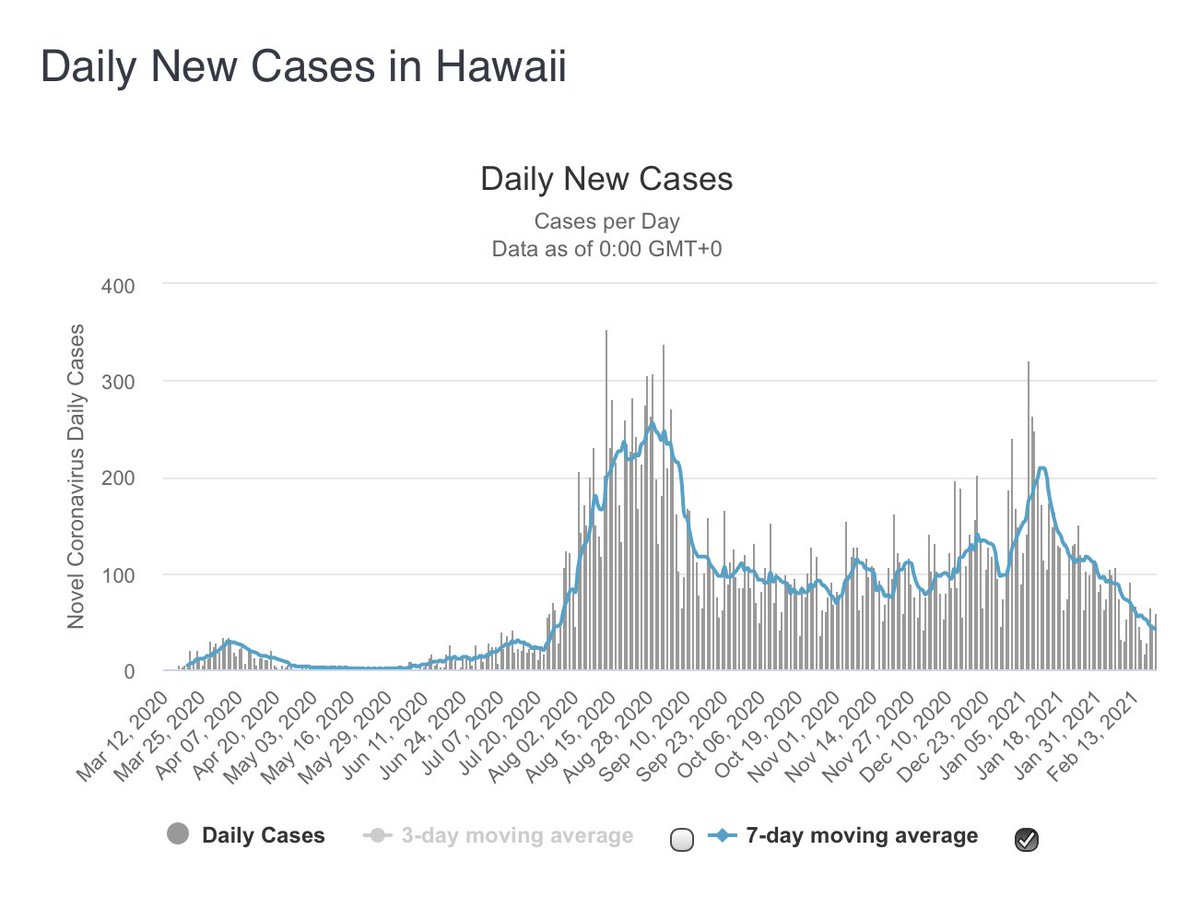
The thing is that much of this article could have been written at multiple points over the last year. Viruses are not influenced by bluster. Fortunately they are impacted by vaccine induced immunity. A few thoughts... 1/n
theguardian.com/commentisfree/…
theguardian.com/commentisfree/…
Cases are falling quickly in the UK and elsewhere, which is great. The reasons are not clear, but it is reasonable to think that some of it is down to the comparatively rapid and effective vaccine roll out *together with* current numbers of contacts 2/n
If those numbers of contacts and opportunities for transmission increase, then we can expect cases to increase too. That is why caution is merited. The more people are protected by vaccination, the more contacts can happen, and there is something else... 3/n
As the weather improves and more contacts can take place outside, we can expect seasonality to have an impact. The regular coronaviruses peak in January, and so some of what we’re seeing (in the US too) may reflect that, including a spike following the holidays 4/n
(In passing, it is extraordinary the range of different US states that saw a peak around that time, speaking to the importance of the contacts made over the holidays) 5/n 



So we expect based on this and the experience of last year that cases will drop over the later spring and summer, but it is important to remember that the virus won’t go away on its own. More vaccination will help, as will parallel but hopefully loosening restrictions 6/n
Why ‘hopefully’? Well there are still important areas of uncertainty when it comes to the later trajectory of the pandemic. Here are a few - how much of the reduction is vaccine, vs infection induced immunity, vs seasonality and non-pharmaceutical interventions? 7/n
The vaccines are not all the same. They are good at preventing severe outcomes of infection, but to get the population rather than the individual benefit they need to arrest transmission. And it is less clear how good they are at that 8/n
And then there is the issue of variants. These are NOT escape mutants (for a start they have arisen in the absence of large scale vaccination) but they may be better able to transmit among vaccinated or previously infected individuals 9/n
The upshot is the potential for transmission to tick up again, especially among unvaccinated individuals. Even if the age group in question is less likely to require hospitalization, some of them will, and more will be left with chronic post-covid symptoms 10/n
However *when* this would happen depends a lot on all the moving parts I mentioned earlier - vaccination, seasonality, variants, contact patterns. Whatever happens over the next few months we will need to keep paying attention, especially come the fall 11/end
• • •
Missing some Tweet in this thread? You can try to
force a refresh



